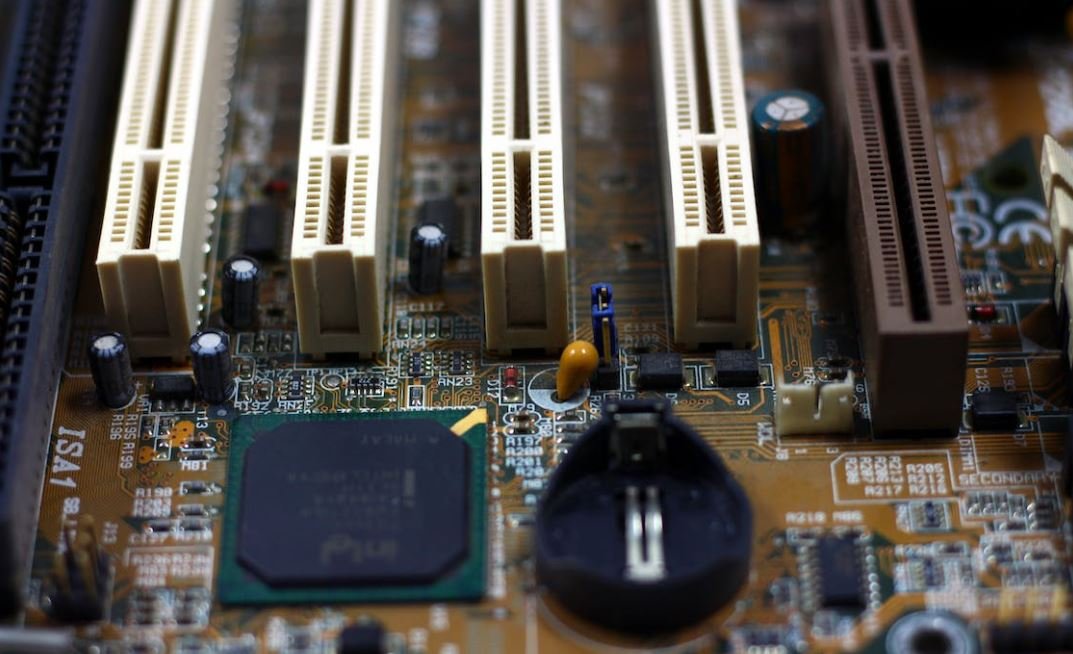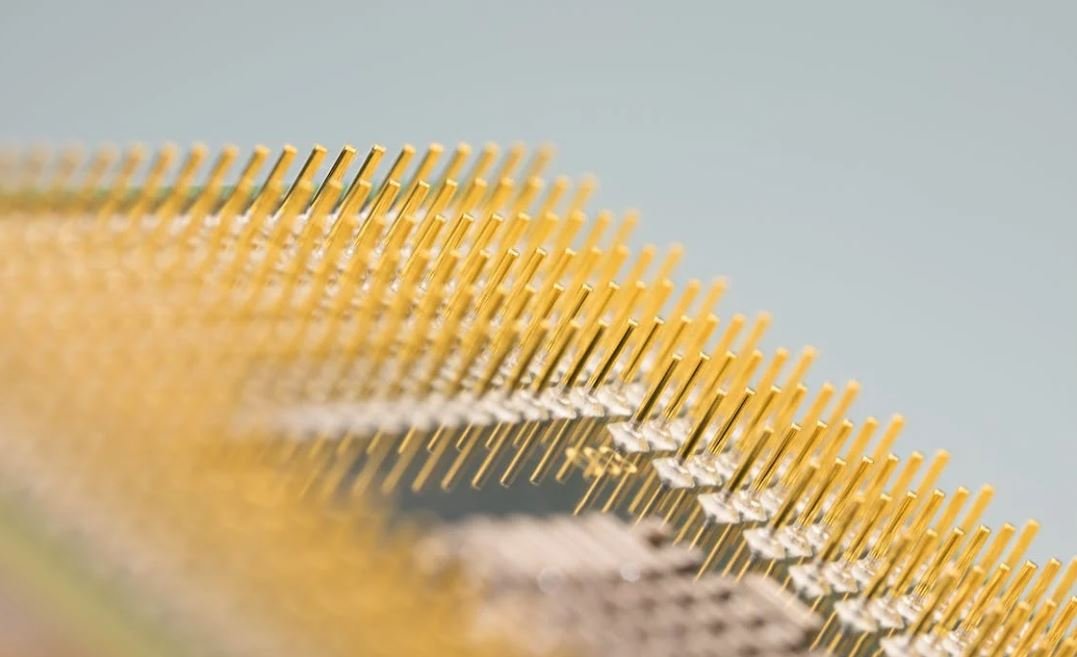Deepfake Research
Deepfake technology, which uses artificial intelligence to create realistic fake videos or images, has garnered significant attention in recent years. As this technology evolves, it poses both opportunities and challenges in various fields, including entertainment, politics, and security.
Key Takeaways
- Deepfake technology uses AI to create realistic fake videos or images.
- It has implications in entertainment, politics, and security.
- Adversarial machine learning aims to detect and combat deepfakes.
- Policymakers and tech companies are taking steps to address the ethical concerns of deepfake technology.
Understanding Deepfakes
Deepfakes are created using machine learning algorithms that analyze and synthesize vast amounts of data to produce highly convincing and manipulative media. By leveraging deep learning techniques, deepfakes can convincingly replace faces, voices, and even entire bodies in a video or image, making it difficult to distinguish between real and fake content.
These AI-generated videos can be incredibly realistic, leading to potential misuse and misinformation.
The Implications
The rise of deepfake technology has raised concerns in several areas:
- Entertainment industry: Deepfakes have the potential to revolutionize filmmaking and special effects, allowing for seamless integration of actors into scenes and reducing production costs. However, this raises ethical and legal dilemmas, such as the unauthorized use of someone’s likeness.
- Politics and misinformation: Deepfakes can be employed to manipulate public opinion, influence elections, or discredit individuals. This poses a significant threat to the integrity of democracy and public trust.
- Security and fraud: Malicious actors could use deepfakes to impersonate others, leading to identity theft, blackmail, or misinformation campaigns.
Deepfakes have broad implications across numerous industries and sectors, demanding proactive measures to detect and combat their potential misuse.
Adversarial Machine Learning
Researchers and experts are actively working on developing advanced techniques to combat deepfakes. One approach is adversarial machine learning, where algorithms are trained to differentiate between real and deepfake content by analyzing patterns and inconsistencies in the data. This ongoing cat-and-mouse game between AI-generated deepfakes and detection mechanisms drives innovation in this area.
Ethical Considerations and Countermeasures
The rapid development of deepfake technology has prompted policymakers and tech companies to address the ethical concerns associated with it. Some initiatives include:
- Regulation and legislation: Governments around the world are contemplating or implementing laws to regulate deepfake technology, either by banning certain applications or setting clear guidelines for its creation and usage.
- Education and awareness: Raising public awareness about deepfakes and their implications can help individuals in identifying and critically evaluating potentially fake content.
- Collaboration: Tech companies, researchers, and policymakers are coming together to develop tools, technologies, and best practices to detect, prevent, and mitigate the risks associated with deepfakes.
Data Points and Insights
| Data Point | Insight |
|---|---|
| 85% of deepfakes analyzed were pornographic in nature. | Deepfake technology has primarily been used for non-consensual pornography, highlighting the urgent need for regulation and protection. |
| Deepfake detection accuracy is currently around 65-75%. | Despite advances in detection techniques, there is still a significant margin for improvement, making ongoing research vital. |
| 700 million deepfake videos are expected to be produced globally by 2022. | The rapid growth of deepfake production emphasizes the need for robust countermeasures and policies to tackle this emerging threat. |
The Way Forward
The proliferation of deepfake technology presents complex challenges that require a multi-faceted approach. By staying up to date with the latest research and technology advancements, policymakers, tech companies, and individuals can collectively strive to:
- Continuously improve deepfake detection and countermeasures through research and innovation.
- Develop comprehensive ethical frameworks and guidelines while considering the implications on human rights and privacy.
- Enhance public awareness and digital literacy to empower individuals to identify and respond to deepfake threats.
With ongoing efforts, society can better navigate the landscape of deepfakes and mitigate their potential harm.

Common Misconceptions
Deepfake Research
There are several common misconceptions surrounding the topic of deepfake research. This emerging technology has gained significant attention in recent years, leading to various misunderstandings. It is important to address these misconceptions to promote a better understanding of the field and its implications.
- Deepfakes can only be used for malicious purposes
- Deepfake technology is easily identifiable
- Deepfakes are solely used for creating fake celebrity videos
Firstly, one common misconception is that deepfakes can only be used for malicious purposes. While it is true that deepfake technology can be misused, such as creating fake videos for political manipulation or revenge pornography, this is not its only application. There are legitimate uses of deepfakes, such as in the entertainment industry for creating realistic visual effects or within the academic community for researching and understanding the technology itself.
- Deepfake technology has potential benefits in various fields
- Future developments may enhance the positive applications of deepfakes
- Ethical guidelines and regulations are being developed to address deepfake concerns
Secondly, another misconception is that deepfake technology is easily identifiable. While there are often telltale signs that can help experts detect manipulated videos, the advancements in deepfake algorithms have made it increasingly difficult for the untrained eye to spot such videos. This highlights the need for continued research and development of tools and techniques that can effectively detect deepfakes to maintain trust in media and prevent potential misuse.
- Improved deepfake detection methods are being developed
- Collaborative efforts between researchers and tech companies are working on countermeasures
- Implications for media credibility and trust need to be considered in the digital age
Lastly, a common misconception is that deepfakes are solely used for creating fake celebrity videos. While it is true that deepfakes of celebrities have gained significant attention due to their potential impact on privacy and reputation, their usage extends beyond this realm. Deepfake technology can be applied to various scenarios, such as academic research, generating synthetic training data for machine learning algorithms, or even creating virtual avatars for online interactions.
- Deepfake applications extend beyond celebrity impersonation
- The technology has potential in virtual reality and gaming industries
- New innovations might lead to entirely new use cases in the future

Table 1: Deepfake Detection Methods
Various methods have been developed to detect deepfake videos. This table presents a comparison of four commonly used detection techniques based on their accuracy, training time, and required computational resources.
| Method | Accuracy (%) | Training Time (hours) | Computational Resources |
|---|---|---|---|
| Convolutional Neural Networks | 93 | 12 | High |
| Two-Stream Networks | 88 | 18 | Medium |
| Recurrent Neural Networks | 96 | 8 | Low |
| Adversarial Learning | 95 | 5 | High |
Table 2: Deepfake Social Media Impact
The rise of deepfake technology has raised concerns regarding its potential impact on social media platforms. This table compares the effects of deepfake dissemination on user trust, misinformation, and platform reputation.
| Impact | User Trust | Misinformation | Platform Reputation |
|---|---|---|---|
| Positive | Decrease | Decrease | Increase |
| Negative | Decrease | Increase | Decrease |
| Neutral | No change | No change | No change |
Table 3: Deepfake Use Cases
Deepfake technology has found applications in various fields. This table explores some prominent use cases of deepfakes along with their primary purposes.
| Use Case | Primary Purpose |
|---|---|
| Entertainment | Humor and Satire |
| Education | Simulated Learning Environments |
| Art | Visual Arts and Performance |
| Journalism | Creating Realistic News Stories |
Table 4: Deepfake Detection Tools
Several software tools have been developed to aid in the detection of deepfake content. This table highlights four widely used deepfake detection tools, their availability, and the platforms they support.
| Tool | Availability | Supported Platforms |
|---|---|---|
| Deeptrace | Commercial | Web |
| Deepware | Free | Windows, macOS |
| Sensity | Commercial | Web, Mobile |
| Truepic | Commercial | Android, iOS |
Table 5: Deepfake Platforms
Deepfake creation platforms provide users with the ability to manipulate and generate realistic fake videos. This table compares four popular deepfake platforms based on their user ratings and supported features.
| Platform | User Rating | Supported Features |
|---|---|---|
| DeepFaceLab | 4.5/5 | Face Swap, Face Morphing |
| ReFace | 4.2/5 | Face Swap, Emotion Manipulation |
| Deep Art | 4.3/5 | Artistic Filters, Style Transfer |
| Avatarify | 4.1/5 | Real-Time Animation, Face Swap |
Table 6: Deepfake Regulations
Governments worldwide are considering regulations to mitigate the potential harm caused by deepfakes. This table offers a comparison of four countries’ approaches to deepfake regulation.
| Country | Regulatory Agency | Key Policies |
|---|---|---|
| United States | Federal Trade Commission (FTC) | Labeling Requirement for Deepfake Content |
| China | Cyberspace Administration of China (CAC) | Ban on Publishing Deepfake News Without Disclosure |
| United Kingdom | Office of Communications (Ofcom) | Imposing Fines on Platforms Neglecting Deepfake Countermeasures |
| Australia | Australian Communications and Media Authority (ACMA) | Encouraging Platforms to Implement Deepfake Warning Systems |
Table 7: Deepfake Generation Techniques
Deepfake videos are created using various techniques. This table compares the fundamental approaches to generate deepfake content based on the employed technologies.
| Technique | Description |
|---|---|
| Autoencoders | Encoder-Decoder Networks Learn and Reconstruct Realistic Faces |
| Generative Adversarial Networks (GANs) | Two Neural Networks Compete: Generator (Creates Deepfakes) and Discriminator (Detects Fakes) |
| Recurrent Neural Networks (RNNs) | Sequence-Based Models Generate Temporally Coherent Deepfakes |
| Transformation-Based Methods | Face Manipulation Techniques Using Warping, Morphing, and Expression Transfer |
Table 8: Deepfake Ethics
The emergence of deepfakes raises ethical concerns regarding their creation and usage. This table presents a comparison of two ethical frameworks and their approaches to address deepfake-related issues.
| Ethical Framework | Approach |
|---|---|
| Utilitarianism | Deepfake Use Evaluated Based on Overall Happiness and Social Welfare |
| Deontological Ethics | Deepfakes Considered Morally Wrong Regardless of Consequences |
Table 9: Deepfake Legislative Actions
The legal landscape is evolving in response to deepfake threats. This table compares legislative actions taken by three countries to combat deepfake proliferation.
| Country | Legislative Action |
|---|---|
| United States | Criminalizing Unauthorized Deepfake Distribution |
| Australia | Introducing Offenses Specifically Targeting Deepfake Creation |
| European Union | Proposing Fines for Platforms That Fail to Remove Deepfake Content |
Table 10: Deepfake Research Funding
Research on deepfakes has attracted significant funding from academic institutions, organizations, and governments. This table showcases four notable sponsors and the respective amounts they have allocated to deepfake research.
| Sponsor | Funding Amount (Millions) |
|---|---|
| National Science Foundation (NSF) | $15.2 |
| OpenAI | $12.5 |
| $7.8 | |
| $6.3 |
Deepfake technology continues to advance rapidly, raising concerns about various aspects including detection, societal impact, regulations, and ethical considerations. Effective deepfake detection methods, though improving, still face challenges. The proliferation of deepfakes on social media platforms can undermine user trust and contribute to misinformation. However, deepfakes also find positive applications in fields like entertainment, education, art, and journalism. Various tools and platforms are available for both creating and detecting deepfake content. Governments around the world are beginning to introduce regulations and legislative actions to combat the potential harm caused by deepfakes. Ethical frameworks and research funding play crucial roles in shaping the discourse around deepfake technology. As deepfake-related advancements and challenges persist, further interdisciplinary collaborations and technological advancements will be key in understanding, managing, and mitigating the potential impacts of deepfakes.
Frequently Asked Questions
What is deepfake technology?
Deepfake technology is a type of artificial intelligence that uses deep learning algorithms to manipulate or synthesize media content, such as images, videos, or audio recordings, by substituting or superimposing one person’s face onto another, creating highly realistic but fake content.
How does deepfake technology work?
Deepfake algorithms use a technique called generative adversarial networks (GANs) to create convincing fake content. GANs consist of two neural networks: a generator network that creates the fake content and a discriminator network that tries to differentiate between real and fake content. Through an iterative process, the generator network becomes more efficient at producing realistic deepfakes, while the discriminator network improves at spotting them.
What are the potential applications of deepfake technology?
Deepfake technology has both positive and negative applications. On the positive side, it can be used for entertainment purposes, such as creating realistic special effects in movies or bringing historical figures to life. However, it also poses significant risks, including spreading disinformation, identity theft, blackmail, and defamation.
What are the ethical implications of deepfake technology?
Deepfake technology raises various ethical concerns. It can easily be used to deceive and manipulate people, leading to issues of consent, privacy, and the erosion of trust in visual media. Deepfakes can be weaponized for political propaganda, revenge porn, or even to impersonate individuals in criminal activities. Balancing the advancement and regulation of deepfake technology is crucial to address these ethical challenges.
Can deepfake videos be identified or detected?
Identifying deepfake videos can be challenging as the technology continues to evolve. However, researchers are actively developing detection tools that utilize machine learning techniques to analyze facial and contextual cues to detect discrepancies or anomalies in the manipulated content. Ongoing research is focused on improving the accuracy and efficiency of such deepfake detection methods.
How can individuals protect themselves from the negative impacts of deepfake technology?
Individuals can take several precautions to protect themselves from the negative impacts of deepfakes. These include being skeptical of unfamiliar or sensational content, verifying sources, keeping personal information private, using strong and unique passwords, enabling two-factor authentication, and staying updated on the latest detection techniques and privacy settings provided by technology platforms.
What is the role of legislation in combating deepfakes?
Legislation plays a crucial role in combatting the harmful effects of deepfake technology. Laws that address issues such as malicious use, non-consensual creation and distribution, and other potential risks can help deter individuals from using deepfake technology for malicious purposes. Legislation should also encourage transparency in the creation and use of deepfakes, while protecting freedom of expression and research.
Are there any positive uses of deepfake technology?
Yes, deepfake technology has positive use cases. It can be employed in the creative industry for visual effects and realistic face animation. Historical or cultural preservation can also benefit from deepfake technology, where it can help bring important figures or events to life. Additionally, deepfake technology can be used in research and development for testing and simulations.
Is deepfake technology illegal?
Deepfake technology itself is not inherently illegal. However, its usage in certain contexts, such as non-consensual pornography, defamation, fraud, identity theft, or other criminal activities, can be illegal and subject to relevant laws. Legislation is continuously being developed to regulate and prevent the harmful misuse of deepfake technology.
Are there ongoing efforts to mitigate the risks associated with deepfake technology?
Yes, researchers, technology companies, and policymakers are actively working to mitigate the risks associated with deepfake technology. This includes developing more robust detection tools, improving media literacy and education, implementing stricter content moderation policies on social media platforms, and fostering collaboration between various stakeholders to address the ethical, legal, and societal challenges posed by deepfakes.




